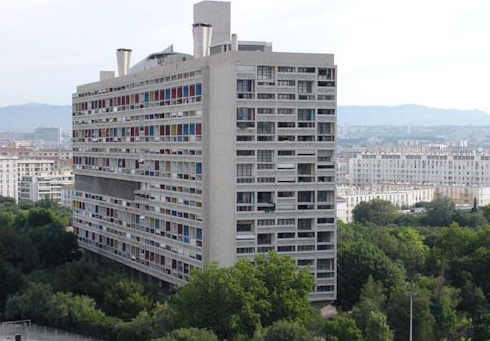
Before and after the ‘refurbishment’, with its deadly flammable cladding
Grenfell Tower was built, Dalrymple notes,
as public housing in 1974. Like all such towers (4,000 of them in Britain) erected at the time, it was an aesthetic blot on the townscape, irredeemably hideous, and destructive of the possibility of civilised sociability.
One reason, Dalrymple explains, that the block of flats was ‘refurbished’ at a cost of more than $10m shortly before the fire
was to improve its appearance slightly, to make it look less Soviet. There was, of course, only so much that could be done in this direction.
Unfortunately, the cladding used to insulate the building, protect it from rain, and improve its appearance
was highly flammable, and it was attached to the building in such a way that it acted as a kind of chimney once the fire began.

Under construction
The local borough council
owned the building but had devolved its management to a non-profit-making management quasi-company that was, in essence, in the public sector, though it paid its senior staff, in effect local-government civil servants, private-sector-sized salaries.
This effectively public-sector management firm
was responsible for choosing the refurbishment and for guaranteeing and certifying that the work done was safe, though similar such work had previously caused fires in buildings like Grenfell Tower. It hired a private contractor, the successor to a company that had previously gone bankrupt after a large claim had been made against it for defective work.
The quasi-public-sector management company
disregarded the tenants’ repeatedly voiced concerns about the lack of proper fire precautions in the building.

An aesthetic blot on the townscape
Dalrymple’s experience of public-sector housing authorities, when he was a doctor with many patients who lived in public housing, was that
they were stone deaf to all justified tenant complaints, unless someone like me made firm representations on the tenants’ behalf.
These authorities, he relates,
were unutterably heartless and dishonest, as well as incompetent. They had to be protected from their clients by bulletproof glass.
Yet
the horrible fire, which is among the most terrifying anyone has witnessed, is being used to demand more public expenditure, raised and administered by the same kind of people who brought such joy to the residents of Grenfell Tower.

The design alone was always destructive of the possibility of civilised sociability


Before and after ‘refurbishment’, aimed at making the building less Soviet

Irredeemably hideous

Under construction

































